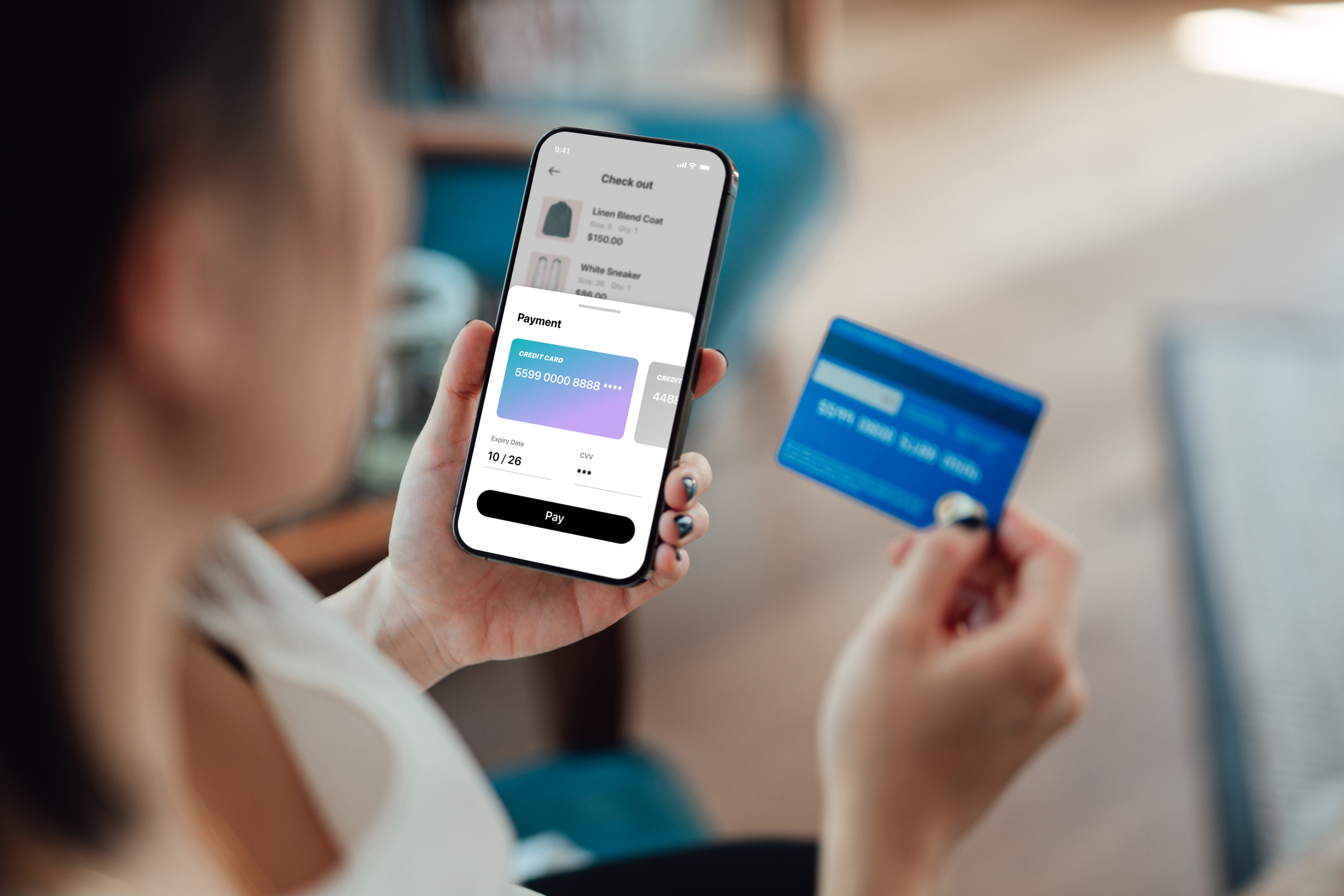Lloyds refunds customers £2 million using chargeback – here’s how it works
More than 40,000 Lloyds customers got their money back when goods didn’t arrive as described, using the chargeback scheme. We look at how chargeback works and ways to protect yourself when shopping online.


Lloyds has returned £2 million to customers in card chargebacks that would otherwise have been lost in transactions on scam and fake websites, according to the latest data from the bank.
More than 44,000 Lloyds customers have made payments to these dodgy sites where goods failed to arrive, turned out to be poor-quality imitations, or resulted in unauthorised subscriptions.
But they managed to get their money back from the scammers following a card payment protection chargeback request, Lloyds said.
MoneyWeek
Subscribe to MoneyWeek today and get your first six magazine issues absolutely FREE

Sign up to Money Morning
Don't miss the latest investment and personal finances news, market analysis, plus money-saving tips with our free twice-daily newsletter
Don't miss the latest investment and personal finances news, market analysis, plus money-saving tips with our free twice-daily newsletter
A chargeback is a reversal of a debit or credit card transaction, allowing your bank to get your money back from the retailer's bank when you haven't received what you paid for or the goods or services were not as described.
There’s no lower limit on claims – the average transaction value in the Lloyds research was £35, based on data between 1 January 2025 and 30 September 2025.
With Black Friday approaching and Christmas less than six weeks away, spending is expected to rise and Lloyds is warning people to beware of fake online shops.
Other scams to be aware of include investment scams, romance scams and AI scams.
Last year, Lloyds customers spent around £594 million on debit cards during the Black Friday weekend – an 89.6% increase compared to the typical weekend average of £314 million. This year, customers are anticipated to match that level of expenditure.
Liz Ziegler, fraud prevention director at Lloyds said: "Everyone is busy hunting for the perfect Christmas gifts and, with so many deals, offers and choices popping up online, it is easy to feel overwhelmed – particularly when you’re trying to stick to a budget and get everything done on time.
“Scammers know how to blend in on social media and the warning signs of a dodgy website or advert can be easy to miss.”
What is a dodgy website scam?
As people flock online to secure in-demand Christmas gifts, scammers are watching, ready to deploy their fake websites and trick people into handing over cash to them, rather than real retailers.
Dodgy websites and fake online shops lure people in with popular festive items, such as Labubu dolls and high-end advent calendars. Here’s how it works:
- Scammers identify the most in-demand items. Right now, that’s Labubu dolls, Jellycat toys and high-end advent calendars – alongside ‘ever-green’ Christmas and Black Friday products, like jewellery, perfume and electronics.
- They’ll set up a website, pretending to sell these popular goods. The website will carry a banner conveying urgency, like a time-limit on the sale and the goods will be heavily discounted compared to well-known shops.
- The fraudsters will then post adverts on social media for their shady sites. The adverts will also use pressure-selling tactics, encouraging people to get clicking, to avoid missing out.
- Once people enter their payment details on the website, the items never arrive or are cheap fakes.
Dodgy websites are growing
Consumers are being warned to be on their guard as the scale of these dodgy websites is growing rapidly, according to Lloyds’ research.
Between the first quarter of 2025 (January to March) and the summer, (July to September) the monthly number of these rogue merchants identified through customer disputes has doubled, rising from an average of 45 to 90. The actual number of rogue merchants is likely to be even higher, said the bank.
More recently, in October of this year, 102 ‘rogue’ merchants were spotted.
How does a bank chargeback work?
When you buy something using a debit or credit card, if the item doesn’t arrive or isn’t as described, you can make a chargeback claim to your bank.
A chargeback (otherwise known as a ‘dispute’) is a way for your bank – the one that issued the card you used to make the purchase – to reclaim money from the seller’s bank when you do not get the goods or services you paid for, including if the retailer or supplier has gone bust.
It is not a legal right like Section 75 protection – which makes a credit card provider jointly liable with the retailer if a purchase goes wrong – but a voluntary scheme agreed upon by card networks such as Visa and Mastercard.
Before starting a claim, you must first try and resolve the problem with the seller directly. If the seller ignores your request or refuses to help, the next thing to do is get in touch with your bank.
Banks can only request the return of funds after a customer has raised a chargeback and chargeback claims need to be made within 120 days of either the transaction date or the delivery date, if one is given.
If the purchase was made on a Visa card, a claim can be started after 15 days. If it’s a Mastercard, it’s a minimum of 30 days after the transaction date. The bank can then request the money back from the seller’s bank.
You can nearly always easily request a chargeback through your bank’s mobile app, which makes the process quick and straightforward.
Every chargeback report about these fake sellers also helps banks report the fake sites to the legitimate payment platforms, who can remove the scammers' ability to take payments.
Ziegler said: “If you’ve been caught out paying for something that hasn’t arrived, or it’s not what you expected, don’t worry – you might be able to get your money back.
“It is usually possible to raise a chargeback using your bank’s mobile app – we can try to get your money back from these rogue sellers and you can get on with looking forward to the festivities.”
Lloyds’ top tips for safer online shopping
- Carefully check the website address, to make sure you're on the official site before buying. A quick search in your browser is safer than clicking on a link from an ad or social media post.
- Be cautious with ads and social posts. If you see a deal on social media, don’t click straight through. Instead, search for the retailer yourself to make sure it’s legit.
- If it looks too good to be true, it probably is. Big discounts on popular items can be a red flag.
- Watch out for the small print, especially on “free” offers. Some come with hidden subscriptions or extra charges.
- Check reviews. Look for independent reviews before you buy as these can help you spot dodgy sellers.
- Report anything suspicious. If something goes wrong, let your bank know straight away. It could help you get your money back and protect others too.
Get the latest financial news, insights and expert analysis from our award-winning MoneyWeek team, to help you understand what really matters when it comes to your finances.
Laura Miller is an experienced financial and business journalist. Formerly on staff at the Daily Telegraph, her freelance work now appears in the money pages of all the national newspapers. She endeavours to make money issues easy to understand for everyone, and to do justice to the people who regularly trust her to tell their stories. She lives by the sea in Aberystwyth. You can find her tweeting @thatlaurawrites
-
 Leading European companies offer long-term growth
Leading European companies offer long-term growthOpinion Alexander Darwall, lead portfolio manager, European Opportunities Trust, picks three European companies where he'd put his money
-
 How to harness the power of dividends
How to harness the power of dividendsDividends went out of style in the pandemic. It’s great to see them back, says Rupert Hargreaves
